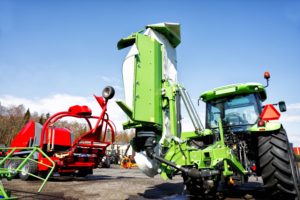In order to properly plan for a new or expanded farming business, proper equipment is a must.
Different kinds of farming require different equipment. Cattle farming is more than just a business, it is a lifestyle. There is paperwork, production, and everyday chores to keep you busy. Here are just a few: fence mending, feeding, vehicle maintenance, grazing management and animal health tasks.

A cattle farming operation should be as efficient as possible. This way, an operator can be more productive and have more time for projects and personal time. The right Cattle equipment helps an operation run efficiently. A tractor can pull a trailer that carries feed, and eliminate the need to drag around bins. An auger for the tractor can change digging for fence post installation and repairs from back breaking work to a more manageable task. There are other useful tractor add-ons like a soil turner that will help grass regrow, and attachments to help prepare and harvest hay.
In addition to a tractor, the following groups of equipment are a must have for most cattle operations:
Cattle Handling Equipment
This is the equipment necessary when moving, weighing and inspecting cattle. Equipment includes: calf tables, cattle headgates, squeeze chutes, loading chutes and cattle handling accessories such as weighing scales, head chains and squeeze chute adaptors.
Corral Systems
Corral systems are small enclosures that help contain animals and limit movement. Corral systems are either permanent or portable. Prices depend on the number of cattle it can hold, as well as additional features. Some corral systems have adjustable alley sections, arena panels, a smaller holding pen, adjustable alley gates and alley frames that can connect directly to a squeeze chute.
Cattle Feeders
This equipment is needed for cattle feeding. Cattle feeders are a must in feedlot settings and are highly recommended for ranchers raising grass-fed cattle. In feedlots it is where cattle are entirely fed; for pasture cattle, it is also needed for giving nutritional supplements. Feeder equipment includes: creep feeders, bale feeders, bulk mineral feeders and bunk feeders.
Waterers and Water Tanks
Large livestock require a lot of water. Cattle waterers include troughs and bowls. The materials range from galvanized steel to rubber to concrete waterers.
The right cattle equipment can help raise the herd and keep the property in top shape. Farming equipment costs can be substantial, and it’s important to take advantage of all sources of funding available to your farm. Whatever you decide: Buying new or used equipment will be a key to your on-farm success. Start or expand your farming business now: the Canadian Grants Business Center can help.
